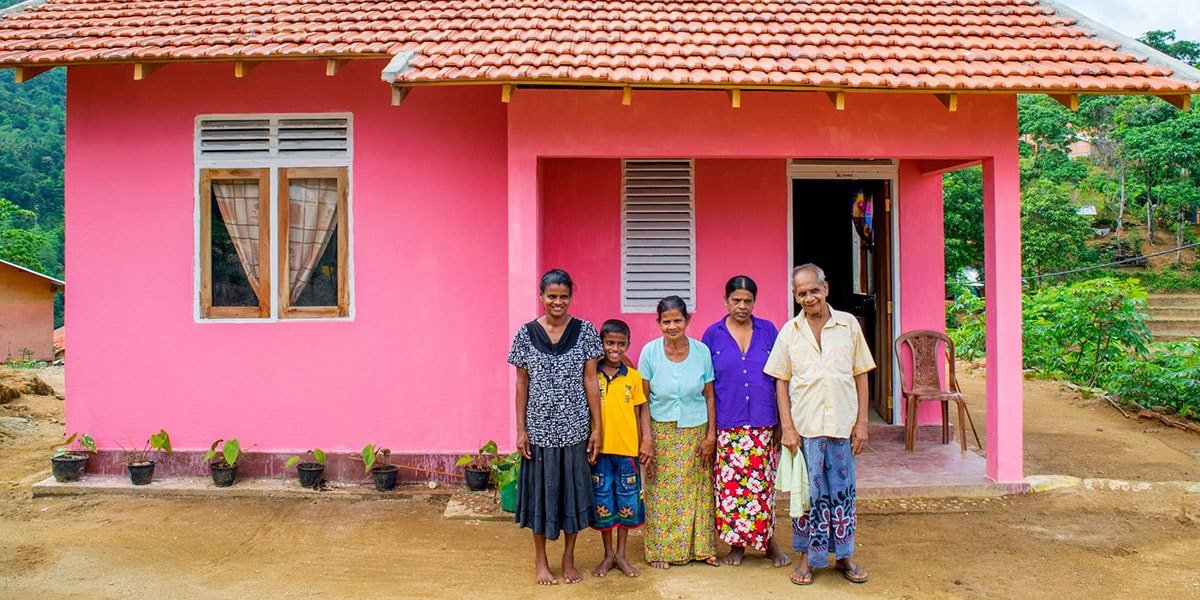
Housing poverty in Sri Lanka
- 39,365 people served in FY18
- 572 volunteers hosted in FY18
- Projects: construction, water and sanitation, environmental and energy saving initiatives, disaster response

Established in 1995, our local office has enabled more than 19,000 low-income families to break the cycle of poverty with decent and safe housing.
By the time the nearly 30-year conflict in Sri Lanka ended in May 2009, many homes, schools and other infrastructure were destroyed, particularly in the Northern and Eastern Provinces.
According to the United Nations, about 160,000 houses were damaged or destroyed in the Northern Province alone.
Earlier, the 2004 Indian Ocean tsunami wiped out about 100,000 houses.
The country’s National Housing Development Authority estimates a shortfall of one million houses which it seeks to address through a five-year housing programme from 2011-2015. The need is still great.
In Sri Lanka’s commercial capital, Colombo, more than half of the population live in informal settlements with limited access to clean water and safe sanitation.
This puts the total amount of housing needed well over a million.
We provide small interest-free loans to help families build or renovate their homes in stages. Families contribute their own labour, or sweat equity, toward building or renovating their homes. The 2004 Indian Ocean tsunami paved the way for our office to help nearly 3,000 families rebuild their homes.
In May 2013, a large-scale housing project funded by the Indian government for internally displaced persons in Sri Lanka was launched. This allowed us to build another 3,000 houses and repair 600 homes in the Eastern Province.
Corporations such as Coca-Cola, GlaxoSmithKhline, Brandix, MillenniumIT and ODEL provide funding and staff as voluntary builders for Habitat projects while students from international and local schools and universities are also strong supporters.
We use cookies to improve your web experience. By continuing to use the site, you agree to the use of cookies. more information
The cookie settings on this website are set to "allow cookies" to give you the best browsing experience possible. If you continue to use this website without changing your cookie settings or you click "Accept" below then you are consenting to this.